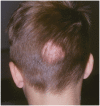Infectious Disease in Contact Sports
- PMID: 30106670
- PMCID: PMC6299350
- DOI: 10.1177/1941738118789954
Infectious Disease in Contact Sports
Abstract
Context:: Infections are common in contact sports. This review aims to describe the epidemiology, presenting signs and symptoms, treatment guidelines, and regulations for several common infections seen in contact sport athletes. The conditions discussed include bacterial skin infections, herpes simplex virus, molluscum contagiosum, common warts, tinea, scabies, head lice, conjunctivitis, human immunodeficiency virus, hepatitis C virus, and vaccine-preventable illnesses.
Evidence acquisition:: Searches were performed across PubMed and MEDLINE research databases. In addition, general internet search engine results and reviews of reference lists of relevant papers were used to identify additional sources of evidence.
Study design:: Clinical review.
Level of evidence:: Level 4.
Results:: The most common infections seen in contact sport athletes include bacterial skin infections, herpes simplex virus, molluscum contagiosum, common warts, tinea, scabies, head lice, conjunctivitis, and vaccine-preventable illnesses. Other infections, including human immunodeficiency virus and hepatitis C, are uncommon but potentially life threatening.
Conclusion:: Infections are common in contact sport athletes. The provider who cares for these athletes should be aware of the most common infections and their appropriate management. Early diagnosis and appropriate clinical management are important for treating the infected athlete, minimizing risk of transmission, minimizing time lost from competition, and preventing large outbreaks.
Keywords: contact sports; infectious disease; skin infection; wrestling.
Conflict of interest statement
The following authors declared potential conflicts of interest: Andrew R. Peterson, MD, MSPH, has a research grant from University of Iowa Injury Prevention Research Center and receives textbook royalties from McGraw-Hill and B.J. Anderson, MD, received payment for lectures and clinical research from GlaxoSmithKline, provided expert testimony for the states of New York and Arizona, and is the CEO of The Mat Doc, LLC.
Figures






References
-
- Adams BB. Skin infections in athletes. Dermatol Nurs. 2008;20:39-44. - PubMed
-
- Adams BB. Tinea corporis gladiatorum. J Am Acad Dermatol. 2002;47:286-290. - PubMed
-
- Adams BB. Tinea corporis gladiatorum: a cross-sectional study. J Am Acad Dermatol. 2000;43:1039-1041. - PubMed
-
- Ammerlaan HS, Kluytmans JA, Berkhout H, et al. Eradication of carriage with methicillin-resistant Staphylococcus aureus: effectiveness of a national guideline. J Antimicrob Chemother. 2011;66:2409-2417. - PubMed
Publication types
MeSH terms
LinkOut - more resources
Full Text Sources
Other Literature Sources
Medical
Research Materials

